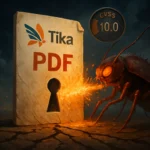A new malicious campaign has been uncovered by Proofpoint, revealing a sophisticated cyber threat that exploits Google Sheets to operate the Voldemort backdoor. This advanced persistent threat (APT) is designed for information gathering and delivering additional payloads, marking a significant evolution in cyber espionage tactics.
The Anatomy of the Attack
The campaign, which began on August 5, 2024, has already targeted over 70 organizations worldwide, spanning various sectors including insurance, aerospace, finance, healthcare, and government. Attackers, posing as tax authorities from Europe, Asia, and the United States, have dispatched more than 20,000 phishing emails, with daily volumes reaching up to 6,000.
These meticulously crafted phishing emails are tailored to the recipient’s location, leveraging open-source intelligence to increase credibility. The messages purportedly contain updated tax information and links to relevant documents, enticing victims to engage with the malicious content.
The Infection Process
Upon clicking the link, victims are redirected to a landing page hosted on InfinityFree, which utilizes Google AMP Cache URLs to further obfuscate the attack. The page employs User Agent detection to target Windows users specifically, redirecting them to a Windows Search Protocol (search-ms) URI that points to a TryCloudflare tunneled URI.
The infection chain cleverly uses a search-ms file to display an LNK or ZIP file disguised as a PDF in Windows Explorer. This technique, increasingly popular in phishing campaigns, creates the illusion that the file is located in the local Downloads folder, encouraging the victim to open it.
The Voldemort Backdoor: A New Level of Sophistication
The heart of this campaign is the Voldemort backdoor, a C-language malware with an extensive set of capabilities. What sets Voldemort apart is its innovative use of Google Sheets as a command and control (C2) server. This approach provides the malware with a reliable, highly available channel for management while reducing the likelihood of detection by security solutions.
Key Features of Voldemort
- Utilizes Google Sheets API for C2 communication
- Supports a wide range of file operations and command execution
- Employs unique identifiers (UUIDs) for isolating and managing compromised systems
- Stores stolen data directly in Google Sheets cells
- Uses encrypted settings to store Google API credentials
The use of Google Sheets as a C2 infrastructure is particularly cunning, as it leverages a widely used and trusted service in enterprise environments. This makes it challenging for organizations to block or detect the malicious traffic without disrupting legitimate business operations.
Implications and Mitigation Strategies
While the ultimate goal of this campaign remains unclear, Proofpoint researchers suspect that cyber espionage is the primary objective. The sophisticated nature of the attack and its wide-ranging targets underscore the evolving landscape of cyber threats.
To protect against such advanced attacks, organizations should implement a multi-layered security approach. This includes:
- Enhancing email filtering and phishing awareness training
- Implementing robust endpoint detection and response (EDR) solutions
- Regularly updating and patching systems
- Monitoring for unusual Google Sheets API usage within the network
- Employing Zero Trust security models to limit the potential impact of breaches
As cyber threats continue to evolve, staying informed and maintaining a proactive security posture is crucial. The Voldemort backdoor serves as a stark reminder of the ingenuity of cyber attackers and the constant need for vigilance in the digital age.






